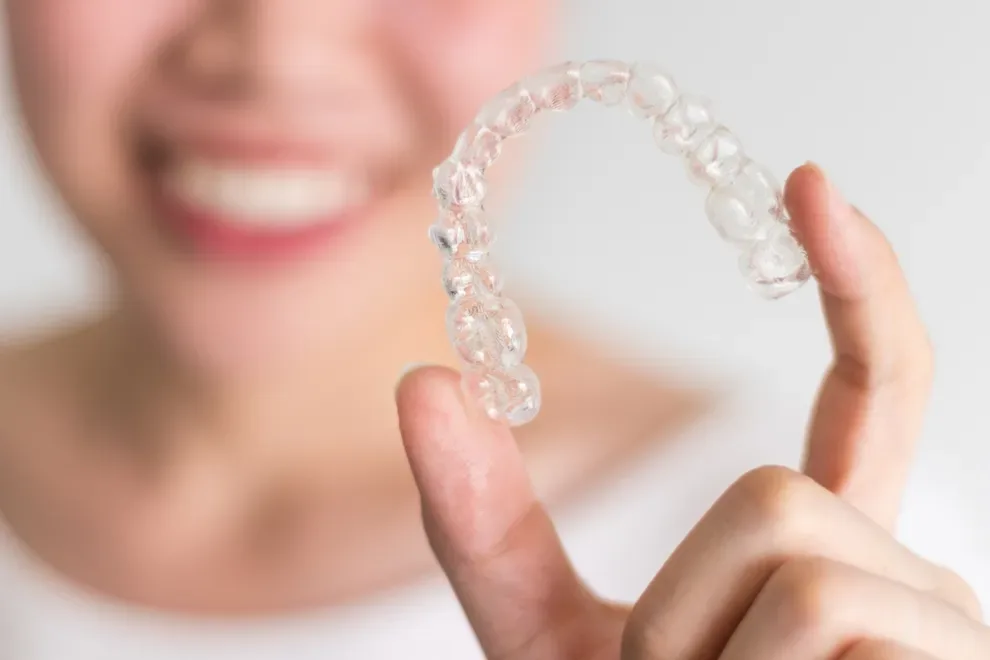Aligners: How Should They Fit? Tips to Getting the Right Fit

Table of Contents
- Causes of Fit Issues
- Tips for Fit
- Frequently Asked Questions
- Accessories to Help
- Is Your Aligner Fit Normal?
- How to Insert Aligners Properly
Once you’ve inserted your first pair of aligners, you’ll experience decreasing pressure levels on your teeth until the intended treatment is achieved.
On Day One, aligners snap into position, fitting snugly around your teeth. They’ll feel looser in about three to four days as your teeth adjust and shift into place.
If treatment goes as planned, your dentist or orthodontist will achieve the desired amount of tooth movement by the end of the first or second week.
At this point, your aligners should feel loose, enough that you will feel you’re ready for replacements. This experience should recur each time you replace these appliances until your teeth attain a perfect alignment.
Is Your Aligner Fit Normal?
Before you assume that your aligners are not fitting, understand what your trays should feel like when they are working as intended.
Aligners that fit have the following attributes:
They fit over your teeth.
They are either comfortable or slightly uncomfortable (if new).
They go into your mouth relatively easily.
They stay on your teeth when you talk or open your mouth.
Aligners that don’t fit have the following attributes:
They are very uncomfortable.
They don’t go into your mouth without a lot of pushing or force.
They fall off your teeth when you unclench your jaws.
Dental professionals use the concept of tracking to determine if your aligners fit properly. Ideal aligner tracking involves trays that fit perfectly over your teeth from crown to tip with no gapping between the trays and your teeth. If your tracking isn’t perfect, your trays can’t do their job effectively, and your treatment might take longer or need an adjustment.
Don’t use mild discomfort as a sign that your aligners are not fitting. Aligners are typically slightly uncomfortable when you use new trays for the first time. They will become more comfortable as your teeth adjust to the new trays.
How to Place Aligners Properly
Are your aligners not fitting, or are you not placing them the right way? It’s a tricky question, and it’s a critical one to answer. By shifting your tray technique, you could ensure that you get the most benefit from your aligners.
Take the following steps every time you put aligners on your teeth:
Examine your aligners for cracks and warping. Contact your doctor or aligner treatment company for a replacement tray if yours has been damaged.
Put an undamaged tray on the center of your front teeth first. Use your thumb to push the tray onto your front teeth.
Use your thumbs to apply gentle pressure to push the trays on your molars.
If needed, press your teeth together gently to ensure the trays snap into your teeth and make a tight seal.
Causes of Fitting Issues
Each person has a unique experience with clear aligner therapy (CAT) systems. If your aligners don’t fit right, the cause can be anything, from the technology and materials used to treatment compliance and appliance care.
Potential triggers of CAT fitting or retention problems include:
Frequent removal
Chewing on one side of the mouth
Aligner damage
Aligner material
Attachment material
Tips to Get Aligners to Fit
Here are some of the tips to ensure your aligners fit the way they’re supposed to:
Get a custom fit
Get aligner attachments
Choose a proper aligner forming technique
Biting down on aligner chewies
Eat the right foods (or avoid the wrong food)
Accessories to Help your Aligners Fit
Aligners Not Fitting? Here’s What to Do
If you’ve followed all the steps we’ve outlined, including placing the aligners properly and using accessories, your trays may still not fit quite right. There’s more you can do.
If your trays don’t fit, follow these troubleshooting steps:
Perform a visual inspection of the trays. Look for damage, such as cracking, warping, and blistering. These problems can prevent the trays from snapping onto your teeth as they should.
Ask your dentist or aligner treatment company for guidance in seating your trays. Perhaps you’re not following the steps quite right, and your treatment team can help you enhance your technique.
Contact your treatment team if your trays still don’t fit. Your treatment program might be moving too quickly, or your teeth aren’t moving as expected. A quick adjustment to your treatment could be just what you need.
